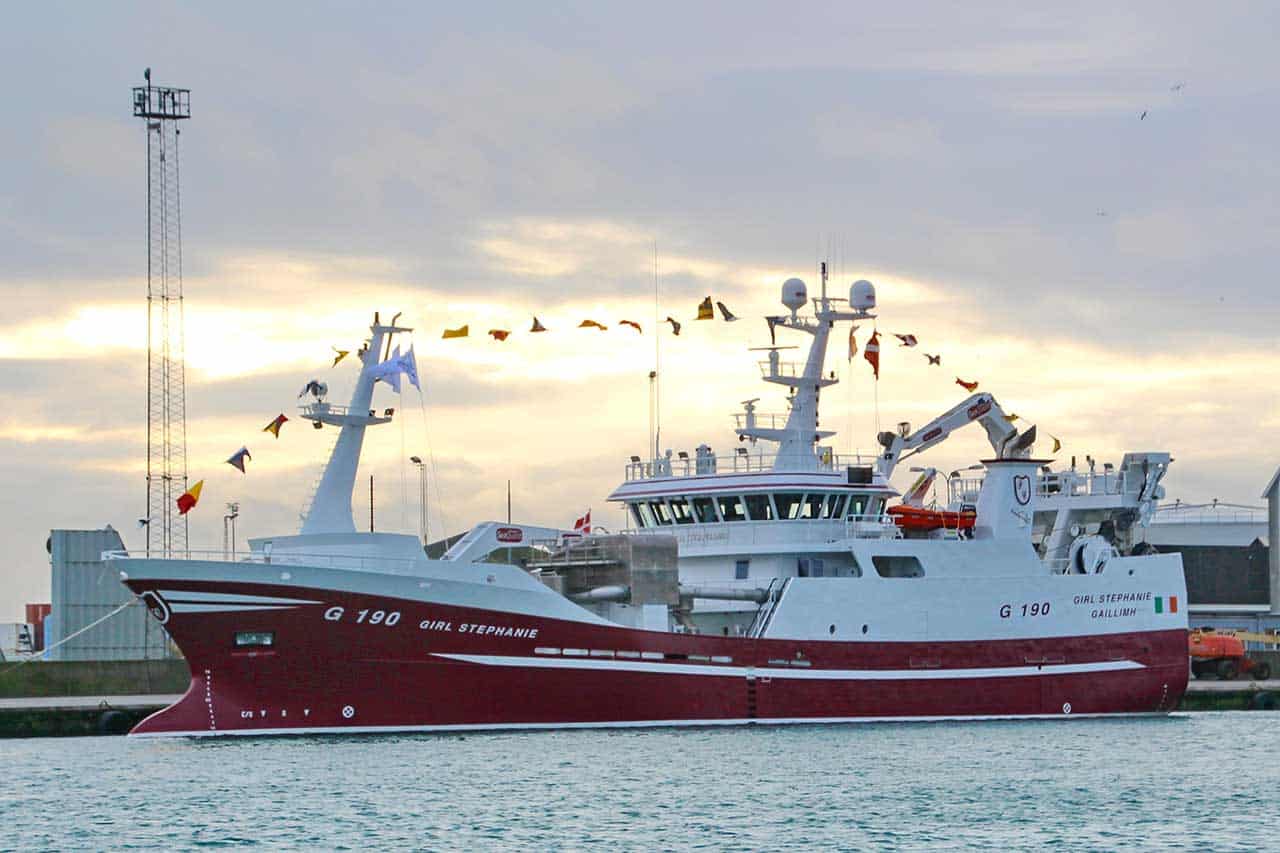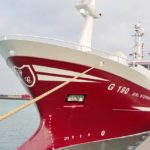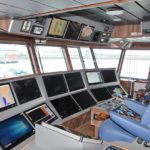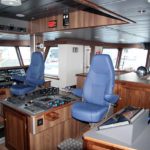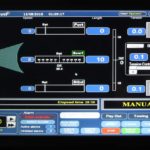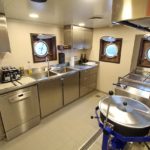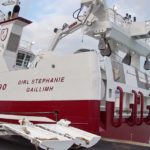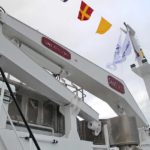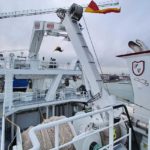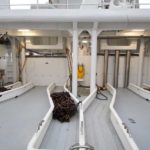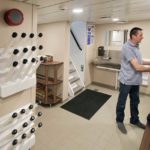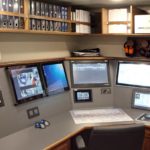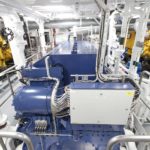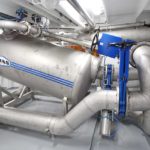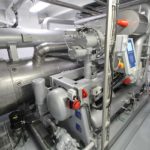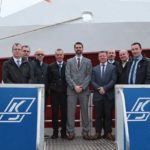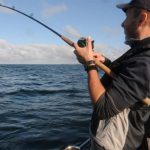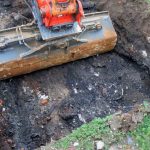Teknisk beskrivelse (engelsk)
The hull is built in steel with two continuous decks; main deck and shelter deck, and with long forecastle- and boat decks. Hull shape of round bilge construction with bulbous bow and stern skeg, flared stem and transom stern.
Below main deck the hull is subdivided into the following watertight compartments: Forepeak, bow thrusters room, tank section with deep fuel oil tanks SB and PS, insulated RSW-tank section with central manifold-/pump room, engine room with main engine connected to one reduction gearbox with one, ducted propeller and aftpeak with fuel- and lub oil tanks.
On main deck the hull is arranged with: Forepeak, electronics room, room for unloading (vacuum) system, trunks for RSW-tanks with centre corridor with RSW-units, accommodation section SB with hydraulic- and work shop rooms, exhaust and ventilation trunking and aft switchboard room. All aft store room with steering gear.
Accommodation on main deck is arranged with 8 crew/officers cabins, all with en-suite toilet/shower compartments, changing room and corridor and staircase. In order to create best possible design for low noise, the accommodation is located as far away from the propeller as possible. In addition a number of constructive steps will be made, in order to create a low noise level.
On shelter deck arrangement is: Store room in forepeak, generator room and aft/under forecastle store room. Abaft forecastle fish receiving deck, with centre deck house with water separator and hatches for the 8 RSW-tanks. Water separator and chute system is built in aluminium, and in way of hatches, fore deck crane is also mounted.
Abaft midship, full width superstructure. Superstructure is arranged with: Deck store, day- and mess room, galley with provision stores and corridor with staircases.
Abaft superstructure trawl deck with 2 net drums is arranged. On transome, 2 hydraulic operated stern gates with roller on top. In front of stern gates, 3 hydraulic operated guiding poles. Above-deck tracks for midwater weights are fitted.
On forecastle deck, anchor winch in dedicated house is fitted, together with mooring equipment. Abaft of this, roll reduction tank and forecastle deck.
On boat deck, abaft midship, deck house in centre is fitted. Accommodation in deck house with skipper- and mates cabins. Room for accommodation ventilation is also in deck house. PS funnel with exhaust and ventilation intakes.
All aft boat deck in full width with SB and PS walkways forward. After part of boat deck arranged as trawl pumping deck, with fish pump, hose reels and tail-end block PS. Integrated in aft ship construction and boat deck is also trawl gallow, which accommodates 2 main towing blocks as well as tail- and top line blocks. Net sounding winch and net stacker- and fish pump cranes are fitted on top of gallow.
Wheelhouse on top of deck house, with 360° view. Funnel with deck for MOB-boat and –crane PS.
All as shown on general arrangement.
Design principles for main engine / auxiliary arrangement are as follows:
On reduction gearbox, 1 Power-Take-Off, mounted with a shaft alternator, producing 1.000 kWe.
To supply additional electric power, the vessel is fitted with 2 auxiliary engines / gen-sets, each producing 2 x 550 kWe. In addition a harbour set of 118 kW is fitted.
During heaving/shooting operations at fishing, when the winch system is in use, the gearbox PTO will be clutched in, and electric power will be supplied from the shaft alternator. When there is demand for full power on the winch(es), there will normally not be same demand for power on the main engine. Following the main engine will be power source for both propulsion and hydraulic system.
During normal towing, the shaft alternator will/can be disengaged, and the electrical power will/can be supplied by either of the gen-sets.
The 2 gen-sets will be able to connect into main switchboard, controlled by the vessels DEIF Power-Management-System. Above designs and systems ensures an economical running profile of the vessel.


